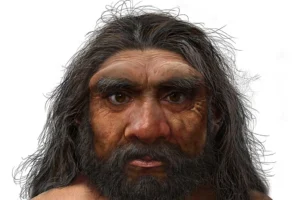What to do if you’re a paleontology power couple stuck at home during the height of the COVID-19 pandemic? Sure, you could make some sourdough or learn the banjo.
But if you’re Dr. Lucy Muir and Dr. Joe Botting, you take the time to finally examine that interesting trove of fossils you’ve been meaning to get around to.
The couple first stumbled over the fossils peeking out of an old quarry near their house in central Wales a decade ago. But the pressures of their daily job at Museum Wales kept Muir and Botting from giving the site — the precise location of which is a secret — the attention it deserved. COVID-related shutdowns changed all that.
Rather than binge Netflix in dirty pajamas, the pair ventured over to the quarry to see what they else could dig up. And they studied the previous fossils they’d been ignoring.

A map and photos of the Castle Bank site. Photo: Botting, Muir, et al.
It was an example of life’s funny habit of plunking the right people at the right place at the right time.
The fossil trove ended up being huge — and possibly as significant as the famous Burgess Shale site in Canada, The Guardian reported.
When life got interesting
It didn’t take long for Muir and Botting to realize that the fossils at their site, called Castle Bank, stretch back at least 460 million years. The Middle Ordovician Period was a time of diverse invertebrate marine life, “when animals with hard skeletons were evolving rapidly,” Muir told The Guardian.
“I like to refer to it as ‘when life got interesting.’ It is when ecology diversified, as well as animals themselves,” Muir said.
So far, the pair have unearthed and studied around 170 fossils. Many of the organisms they’ve discovered are small enough to warrant study with a high-powered microscope. Lacking their museum’s resources during the COVID shutdown, Muir and Botting crowdsourced funding and purchased the needed equipment.

Some of the fossils collected at the Castle Bank site. Photo: Botting, Muir, et al.
As they looked closer, they realized their finds were an unusually diverse smorgasbord of hard and soft-bodied animals: worms, starfish, sponges, arthropods, and crustaceans.
That’s an unusual mix for an Ordovician site. Even better, many of the fossils showcase preserved soft tissue like eyes, optic nerves, and digestive systems.
Muir and Botting recently published their initial findings in the journal Nature Ecology & Evolution. But the pair has no intention of halting their dig any time soon.
“Every time we go back, we find something new, and sometimes it’s something truly extraordinary,” Botting explained. “There are a lot of unanswered questions, and this site is going to keep producing new discoveries for decades.”






